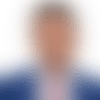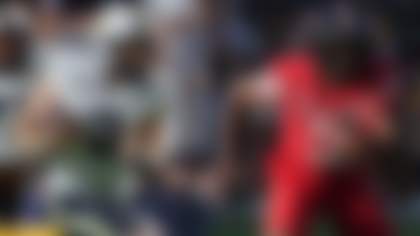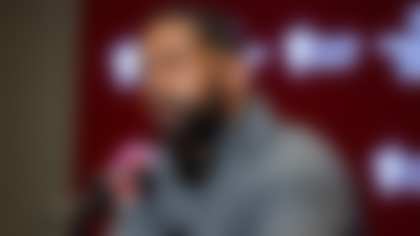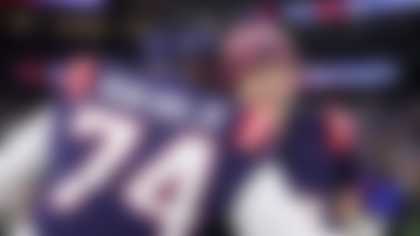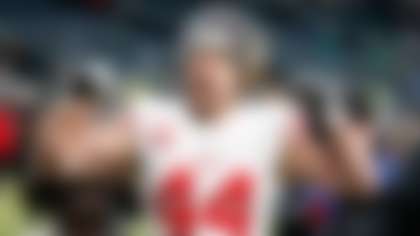PHOENIX -- Jim Brown never would have needed a rule change. Not the way he remembers it.
The legendary former Cleveland Browns running back used to choose a different way of destroying would-be tacklers and leaving them in his wake. And it didn't involve attacking them head-on with the crown of his helmet, a move that will now incur a 15-yard penalty and a possible fine.
"I didn't use my head," Brown said Monday at The Biltmore before owners voted Wednesday to approve the rule change at the NFL Annual Meeting. "I used my forearm. The palm of my hand. And my shoulder. And my shoulder pads. I wasn't putting my head into too much of anything. I don't think that's a good idea. At least, it doesn't sound like a good idea to me."
And yet, the Browns' current running back has shown it did to him. At a Monday news conference intended to help explain why the competition committee had proposed eliminating the move, the first video shown was one of Trent Richardson lowering his head and popping the helmet off of Philadelphia Eagles safety Kurt Coleman.
The rule change is in line with the NFL's focus on health and safety. The use of one's head isn't just dangerous for defenders; it's also dangerous for the running backs themselves.
"We're bringing the shoulder back to the game," said St. Louis Rams coach Jeff Fisher, a member of the competition committee, before Wednesday's vote. "The helmet is a protective device, but it's not being used as that as of late. This is to protect the players."
The move will now result in a 15-yard penalty, and the offending player will also be subject to a possible fine. If an offensive player and a defensive player both lower their heads, the resulting penalties will offset. The rule will only be in effect when both players clearly are outside the tackle box (an area extending from tackle-to-tackle and from 3 yards beyond the line of scrimmage to the offensive team's end line).
"The player doing the hitting is putting himself at risk of a serious neck injury," said Dean Blandino, the NFL's vice president of officiating.
The idea for the rule change first gained traction in Indianapolis during the competition committee's meeting at the NFL Scouting Combine. To determine the extent of the issue, the NFL studied the 16 games that were played in Week 16 of this past season. A thorough review revealed that penalties would have been called five times, more than enough occurrences to warrant corrective action.
And yet, before the change was approved, there were still questions.
"Will we be able to enforce it?" wondered New England Patriots coach Bill Belichick. One general manager echoed that thought, saying, "Don't we put enough on officials?"
And then there is the most basic question: What, exactly, constitutes lowering one's helmet? In theory, the rule only applies to straight-on hits. If a running back's attempt to protect himself by "getting small" results in a helmet-on-helmet collision, he won't incur a penalty, provided he turns his shoulder. Similarly, no foul will be called if two players running to the sideline happen to hit helmets, as long as they aren't lowered as weapons.
Fisher understood that some contact is unavoidable.
"If you're a runner and you run tall, you won't last long in this league," Fisher said. "You got to be able to protect yourself. But there is a difference between protecting yourself and striking someone with the crown of your helmet."
What constitutes "the crown?" As Blandino said, "Put a beanie on the helmet." That's it.
Running backs, including Marshall Faulk, spoke out before the owners voted. Chicago Bears back Matt Fortesaid on Twitter that the proposal was "the most absurd suggestion of a rule change I've ever heard of."
Fisher had been bracing for the reaction, saying that player education will be key.
"We watched a lot of tape," Fisher said. "We hope they (will understand). I think they will."
Brown touched on the reason the ban was even being discussed in the first place.
"I'm not guaranteed that my head is going to be strong enough to hurt somebody else," Brown said, "and not hurt myself."
Follow Ian Rapoport on Twitter @RapSheet.
